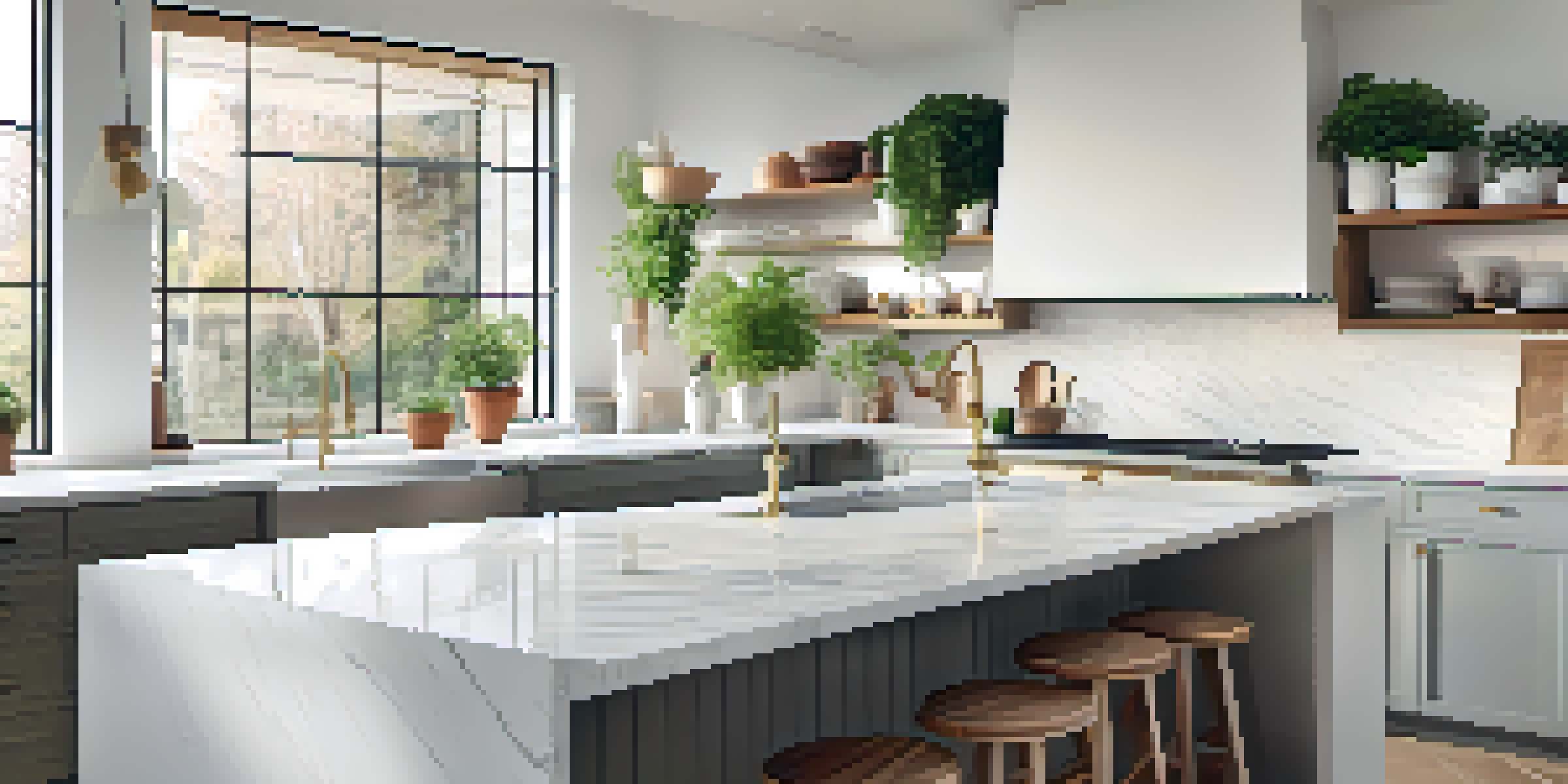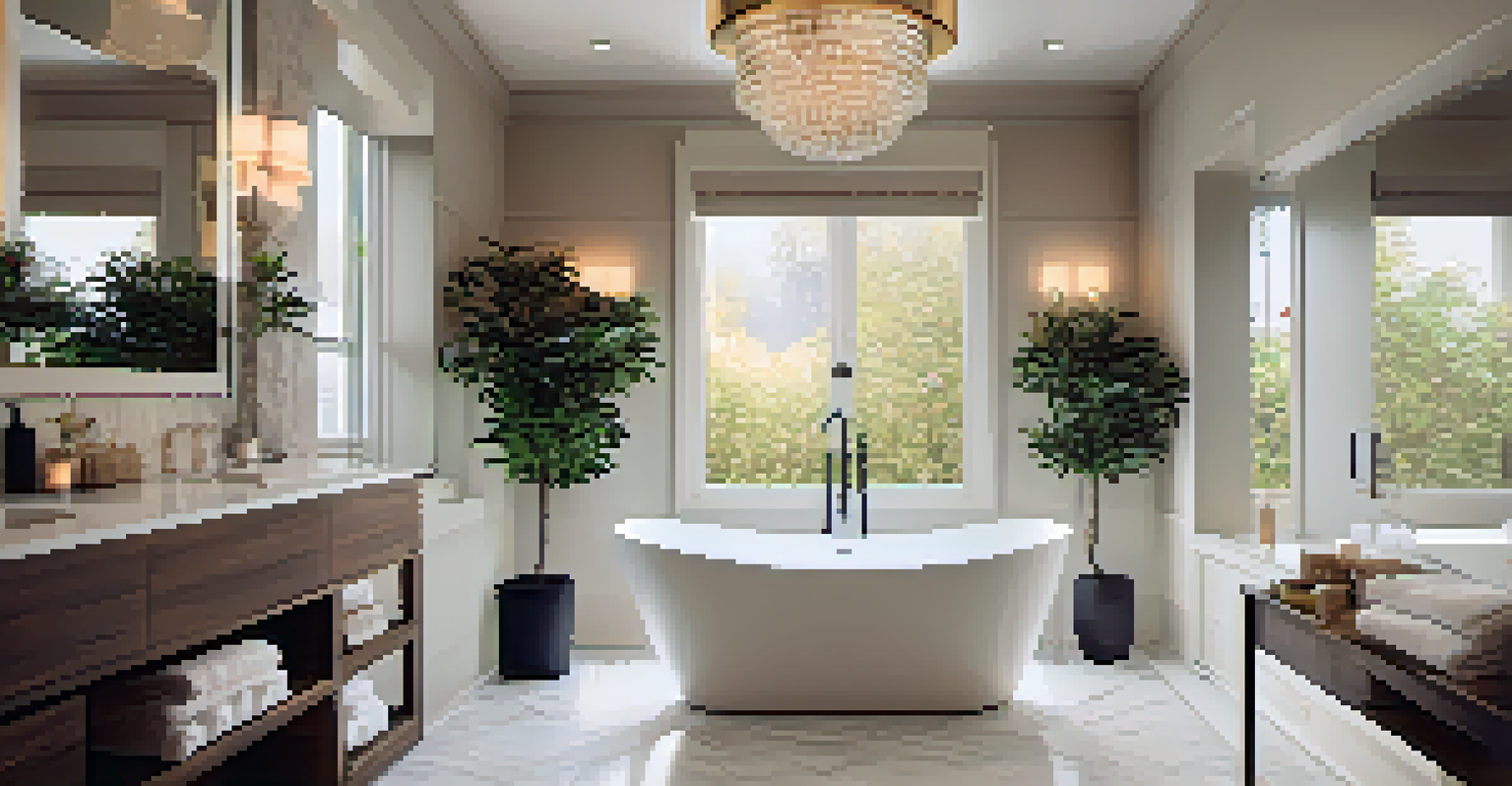How to Ensure Your Contractor Understands Your Vision

Start with a Clear Vision of Your Project Goals
Before you even approach a contractor, it’s crucial to have a solid understanding of your project goals. Think about what you want to achieve, whether it’s a remodel, new build, or renovation. This clarity will serve as the foundation for your discussions and help you articulate your needs.
The secret of change is to focus all of your energy, not on fighting the old, but on building the new.
Visualize the end result and consider the details that matter to you. Are you envisioning an open floor plan, specific materials, or a particular style? Jot down these ideas to create a reference point that you can share with potential contractors.
A well-defined vision not only sets the stage for effective communication but also helps in avoiding misunderstandings later on. Remember, the clearer you are about your goals, the better equipped your contractor will be to bring them to life.
Use Visual Aids to Convey Your Ideas
Words alone may not fully capture your vision, which is where visual aids come in handy. Gather images, sketches, or mood boards that reflect your aesthetic preferences and project aspirations. This can help bridge any gaps between your vision and the contractor's understanding.

For example, if you want a modern kitchen, showing pictures of sleek countertops and minimalist cabinets can give your contractor a concrete sense of what you're aiming for. Visuals provide context that can be more effective than a lengthy description.
Define Your Project Goals Clearly
Having a solid understanding of your project goals ensures effective communication and helps avoid misunderstandings with your contractor.
Additionally, platforms like Pinterest or Houzz can serve as great resources to find and save inspiration. When you present these visuals, you create a shared reference point that can spark meaningful conversations.
Communicate Openly and Frequently
Effective communication is key to ensuring your contractor understands your vision. Schedule regular check-ins and be open to discussing any concerns or adjustments as the project progresses. This ongoing dialogue not only keeps everyone on the same page but also fosters a collaborative atmosphere.
Good communication is just as stimulating as black coffee, and just as hard to sleep after.
Don't hesitate to ask questions or seek clarification on any points that seem unclear. A good contractor appreciates your involvement and will be more than happy to explain their process or address your queries.
Furthermore, sharing feedback throughout the project can help refine the execution of your vision. Constructive communication can lead to better results and a smoother working relationship.
Provide Detailed Specifications and Requirements
In addition to discussing your vision, it’s vital to provide detailed specifications. Outline your requirements clearly, including materials, colors, and designs. This level of detail helps contractors understand your preferences and minimizes the risk of misinterpretation.
For instance, if you want a specific type of tile for your bathroom, include information about its size, color, and pattern. The more specific you are, the easier it will be for the contractor to deliver what you envision.
Use Visuals to Communicate Ideas
Visual aids like images and mood boards can bridge the gap between your vision and the contractor's understanding, enhancing clarity.
Moreover, having a written document with all the specifications can serve as a reference point throughout the project. This not only keeps everyone aligned but also helps manage expectations on both sides.
Encourage Questions and Feedback from Your Contractor
Just as you should express your vision, encourage your contractor to ask questions and provide feedback. Their expertise can bring valuable insights that may enhance your project. By fostering an environment where questions are welcomed, you open the door to collaboration.
Sometimes, a contractor may have suggestions based on their experience that could improve the functionality or aesthetics of your project. Being open to their input can lead to innovative solutions that you might not have considered.
Additionally, this two-way communication can help identify any potential challenges early on. Addressing these issues proactively can save time and resources in the long run.
Set Realistic Expectations for Timelines and Budgets
When discussing your vision, it’s essential to set realistic expectations regarding timelines and budgets. Understand that achieving your dream project may require compromises, especially if your vision exceeds your budget or timeframe.
Discuss these factors openly with your contractor and work together to create a plan that aligns with your goals. For example, if you have a tight budget, your contractor might suggest cost-effective alternatives that still meet your vision.
Encourage Open Communication
Fostering an environment of open dialogue and feedback with your contractor leads to better collaboration and innovative solutions.
Being transparent about your financial limits and desired timelines helps avoid misunderstandings later in the project. A clear agreement on these aspects ensures that everyone is on the same page from the start.
Document Everything for Future Reference
As your project progresses, it's a good idea to document everything. This includes all communications, agreements, and any changes made along the way. Having a record can be invaluable if discrepancies arise, ensuring everyone remembers the initial vision.
For example, keeping a project journal or digital log can help track decisions and modifications. This not only serves as a reference for you but also provides clarity for your contractor.

Moreover, documenting the process can help in future projects, allowing you to refine your communication and planning skills. It’s a great way to learn and grow from each experience.
Celebrate Milestones and Progress Together
Finally, don’t forget to celebrate the milestones and progress made throughout your project. Acknowledging achievements, big or small, fosters a positive working relationship and keeps morale high. Whether it’s a successful completion of a phase or the installation of a key feature, take a moment to appreciate the hard work.
Celebrating these moments not only strengthens the bond between you and your contractor but also motivates everyone involved to maintain a collaborative spirit. A simple ‘thank you’ can go a long way in building rapport.
By sharing in the excitement of your project, you create a sense of community which can lead to even better results. After all, your vision is a team effort, and recognizing contributions makes the journey more enjoyable.